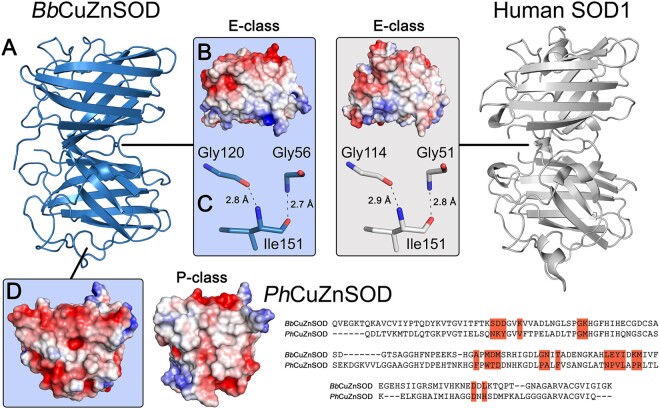Fig. 5.
Bacterial BbCuZnSOD dimerizes through an E-class interface. (A) Structure of homodimeric BbCuZnSOD showing tertiary and quaternary structure similarity to human SOD1 (2C9V). (B) Surface charge map showing the BbCuZnSOD interface is composed of a nonpolar patch which is conserved in human SOD1. (C) The BbCuZnSOD interface maintains E-class intersubunit hydrogen bonding using the same amino acid type, bond lengths, and angles as human SOD1. (D) Surface charge map showing BbCuZnSOD does not exhibit a nonpolar region which contributes to P-class homodimerization as exemplified by Photobacterium leiognathi PhCuZnSOD (1YAI) and has very poor conservation (9% identity) of interface residues (highlighted orange).

